Lea Wait's Blog, page 16
April 14, 2025
What Keeps You Coming Back?
Hi all. Gabi here.
Last week, I was meeting with a group of crime writers and somehow we ended up on the topic of the subconscious. So stick with me. We are going to go deep today.
When I told my Abuelita, who is now 96, that my first story was going to be published in Ellery Queen Mystery Magazine, she told me about how, when she was little, Tita Tey (my great-grandmother), would send her to pick up copies of that very same publication at the library in the small and dusty town of Las Vegas, New Mexico. She remembered her mother reading them, with her hair tinted red and a gin cocktail in one hand and a cigarette in the other. “Mysteries are in your blood,” she said, a touch dramatically because that is how she rolls, but also with a certainty that 96 years of living allows for.
Any maybe there is something to this idea. My Abuelita remembers her grandfather, which would be my great-great grandfather, reading The Moonstone by Wilkie Collins in a dusty library in Mexico in the 1920s.
The love of crime fiction goes back five generations which somehow seems significant. That is more than a hundred years of mystery loving.
Why?
***
I have three very distinct formative memories of my love of reading mysteries.
In one, I am sitting on the wrap-around porch of the family farm in Somerset, PA. It is a summer night. It is raining. There is a bug zapper and a porch light and I’m sitting in a rocking chair with a small bowl of salted peanuts reading an Agatha Christie that somebody else left behind.
In another, I am in the bath tub reading a somewhat water-logged Elizabeth Peters that my aunt gave me. It’s sometime near Christmas. I read until the water goes cold and I am young enough for the romantic subplot to feel vaguely subversive.
And in the third, I’m bed at my grandparent’s house. In this memory, it’s a dog-eared copy of a Perry Mason that I smuggled upstairs and am reading with a book light under the covers. Downstairs my grandparents are in their recliners watching Matlock. My cousin is in the other room, already asleep.
Since then and now, the family farm has been sold, my aunt is living with Alzheimer’s, and my grandparents are buried next to each other in the Presbyterian cemetery in Greensburg.
I myself am a very different person than I was 30 years ago, carrying a knapsack filled with all sorts of both good and bad things.
***
In Black Cherry Blues (1989) by James Lee Burke, there is an especially moving passage that goes: “That night I dreamed of South Louisiana, of blue herons standing among flooded cypress tress, fields of sugarcane beaten with purple and gold light in the fall, the smell of smoldering hickory and pork dripping into the ash of our smokehouse, the way billows of fog rolled out of the swamp in the morning, so thick and white that sound — a bass flopping, a bullfrog falling off a log into the water — came to you inside a wet bubble, pelicans sailing out of the sun over the breakers out to the Gulf, the palm trees ragged and tree and clacking in the salt breeze, and the crab and crawfish boils and fish fries that went on year-round, as though there were no end to a season and death had no sway in our lives, and finally the song that always broke my heart, ‘La Jolie Blonde,’ which in a moment made the year 1945.”
The narrator, Dave Robicheax, meanders through a childhood memory that is so rich with details that I am thinking of my brothers and my sisters, of the neighborhood kids that I grew up with and will probably never see again, of the house that raised me with a blue barn and never-ending list of projects. It makes me think about all the things we hold on to as we age, and all the things we lose.
In this instance, Burke’s stream of conscious, poetic meditation is woven into well-developed plot with a narrator who is reluctant to involve himself in the business of others, but does so when he’s backed into a wall. (There are very few things I love more, it turns out, than a reluctant, imperfect hero.) Of course, there is a murder. There are clues. There are subsequent murders. There are buried bodies. There are more clues. There is a ticking clock. There are sympathetic but deeply flawed secondary characters. There is another body. There is a villain.
So perhaps part of why I love crime fiction is the form itself. The guideposts and guardrails of the genre: the red herrings and the smoking guns and the pursuit of justice.
But, perhaps even more so, there is a sense of returning to people and places and moments and discovering them anew. Maybe when I pick up a mystery, a piece of me feels the way I did when I was reading under the covers in the green room at my grandparent’s house. Maybe some part of my subconscious recalls the Klondike bars after dinner and the smell of chlorine from swimming at the Boyton’s pool and playing table tennis with my cousin in the basement. Maybe, the tropes and beats integrated into crime fiction trip these formative experiences, a thread pulling the me of the past to the me of now, allowing for a more fully integrated self.
***
I have taken to reading with my children, piled into one bed with Jack, our rescue lab. I know there is a finite amount of time for this sort of thing. These days seem long now, but I get that the years are short.
I wonder if one day, when I’m older and maybe far away, if they’ll pick up a book for a class or on an airplane or maybe with their own children and think about this sort of thing.
The brain works in mysterious ways, after all.
***
I’m wondering what you think. What are your formative crime-reading memories? What drew you to the genre? What keeps you here?
[image error]
In other news:
I’m hosting a Noir at the Bar on April 30 @ Novel in Portland with some other amazing local writers. Join us for a drink and some moral ambiguity. Event starts at 7:30 and is free.
I’m going to be interviewed on 5/1 on WABI 5 Bangor for the Book Club segment.
Gabi
April 11, 2025
Weekend Update: April 12-13, 2025
 Next week at Maine Crime Writers there will be posts by Gabi Stiteler (Monday), Rob Kelley (Tuesday), Matt Cost (Thursday) and Kaitlyn Dunnett/Kathy Lynn Emerson (Friday).
Next week at Maine Crime Writers there will be posts by Gabi Stiteler (Monday), Rob Kelley (Tuesday), Matt Cost (Thursday) and Kaitlyn Dunnett/Kathy Lynn Emerson (Friday).
In the news department, here’s what’s happening with some of us who blog regularly at Maine Crime Writers:
An invitation to readers of this blog: Do you have news relating to Maine, Crime, or Writing? We’d love to hear from you. Just comment below to share.
And a reminder: If your library, school, or organization is looking for a speaker, we are often available to talk about the writing process, research, where we get our ideas, and other mysteries of the business, along with the very popular “Making a Mystery” with audience participation, and “Casting Call: How We Staff Our Mysteries.” We also do programs on Zoom. Contact Kate Flora
April 10, 2025
Winter Is Over & Valuable Lessons Learned

Vaughn
Vaughn Hardacker here: It’s April, and I have survived another winter. The sun is shining (I sacrificed a goat to the Sun God/Goddess). Truthfully, from a weather perspective, this past winter was mild. We had very little snow through December and January, and the genuinely frigid air (the one thing Canada sends to us–possibly because there is no tariff) didn’t arrive until mid-February … about when my heating system croaked. We’ve had two consecutive mild winters (some people blame it on global warming … if so, I say: Bring it on! People who complain about it should spend a few normal winters up here in The County. Has anyone noticed that people who live in a particularly cold or impoverished place give it a name that makes it seem special?) Anyway, things are warming up, although we’ve had snow every night for the past week, and more is forecasted in two nights before this will post. It melts during daylight, but it seems as if Old Man Winter is saying: “Don’t get too excited. I ain’t done with you yet.” No big deal. Anyone who has lived in The County knows that winter ends in late April, followed by Mud Season (called May by residents who live south of us- which includes 99.99999% of the world population), and then we have two days of summer. I’m not complaining; after all is said and done, my wife of 35 years passed, and I was laid off from the high tech company I worked for (in the last nine years of my high tech carrier, I worked for seven different companies. So if any of your children are thinking of a career in high tech, give them this advice: “Why don’t you get a career where you will have a future? Maybe the wonderful world of fast foods.) Many high-tech companies do not have a pension plan. They have stock options. When I worked for Nortel Networks, I told my closest friend that I would sell them as soon as my options matured. He thought I was insane. That spring, Nortel shares sold for over $100.00 a share He said, “When I retire, my stock will make me a millionaire. By the end of the year, Nortel stock was selling at $1.00. In conclusion, when I finally had enough of the rollercoaster ride, I left southern New Hampshire and returned to The County. My retirement? Social security.
Now that I’ve had my rant. I want to take a few minutes to thank everyone who has so generously donated to my Heating Fund. Some background. Some of you may be familiar with my background. I grew up in an alcoholic family. Our glass was never half-full; it was half-empty. Anyone who was, or appeared to be, better off than us was to be denigrated. The old I knew them when syndrome. In 19889, while living in the Chicago suburbs, my world crashed. My career was a joke, if that, and my family life was at a crossroads. My wife and daughter left and returned to Maine. After two weeks alone, I drove straight through to Caribou, intending to bring them back. I knocked on the door, and Connie (my wife) opened it. I smiled; she didn’t. “What are you doing here?” she asked, then slammed the door in my face. I turned around and drove back to Illinois. Upon return I knew that I was up to myu butt in alligators … and they were snapping. Somewhere during that twenty-three hour drive, I had an epiphany. I resolved that I needed help. Enter the most formidable woman I have ever known, a counselor. She listened to me for a few minutes and then asked some questions:
“Are you a drinker?”
“I like a beer now and then.”
“Define now and then.”
“I have a few drinks.”
“That’s not how many. Let’s get things on the table right now. You came to me for help. The only way I can help is if you give me honest, straight answers. Not evasive B.S. Are you a drinker?”
“Yes. How many depends on what I’m dealing with. On a good day, I have four or five beers. On a bad day I break out the bourbon and don’t stop until I can see light through the bottom.”
“What about anger?”
“Anger? I get angry, everyone does.”
“OKay, show me your happy face.”
I did.
“Now show me your angry face.”
I did.
“Show me the face you show to people you like.”
I did.
“Those you don’t like>
I did.
“That’s what I figured. You only have one face–anger.
“One last question. Do you set personal goals?”
“Yes.”
“Do you attain them?”
No answer.
She made some notes and then said two words that I had no idea what they meant. She said, “Adult Child.”
She must have hit a nerve because my answer was flippant: “Isn’t that an oxymoron?”
“Not really. Adult children believe that to get their alcoholic parent’s approval, they must go above and beyond. Therefore, they set goals for themselves that God couldn’t meet.
Then she gave me the bad news. “Adult children of alcohol addicted parents stop maturing the first time they drink alcohol, which is usually in their mid-teens. They only feel one emotion, anger. They distrust anyone who attempts to help or assist them. When asked a question about themselves, they either deflect it or lie. I’m not sure about which things you’ve told me are true and which aren’t. Do you isolate?”
By now, I was uncomfortable with the way this had gone. In the past, I had always been able to lead people down the rabbit hole of my choice. The petite brunette looked across the desk at me and said, “Let’s get this straight. If I am going to be able to help you, it will not be easy. I will advise you what I believe you need to do. YOU, not I must do the work. It won’t be easy; growing up physically is not your issue.” She tapped the side of her head. “Maturing here,” she touched her chest near the heart, “and here. That’s the bitch. Not everybody is looking at you when you enter a room. We have a word for that. We call in grandiosity. The world is not watching you, nor finding you lacking. Truth be known, there is more than one person in the room going through the same things. You are not all that unique.”
She gave me the information for a group called Adult Children of Alcoholics, a self-help group based on the principles of AA. I attended faithfully. Now I know why people look to me whenever there is a calamity or emergency situation. I can handle it. I am an adult child; I grew up in a chaotic environment. I’m so good at dealing with these situations that I get uneasy when there are none–so I create one…
I have been stand-offish for most of my adult (and I use that word carefully) life. People may think I feel I’m above everyone. However, the truth is I’m scared half out of my wits. I don’t know how to start a conversation with someone I haven’t known for a long time. However, if they approach me and I don’t seem receptive, it’s not because I’m stuck-up. It’s because I don’t know what to say!
When the boiler that heats my house and provides hot water broke, and I was given a quote of $14,000.00 to replace it, my knees went weak. My neighbor from across the street came over to lend us some space heaters (If you’re reading this, I owe you big time, Deb) and said, “I’ll start a gofundme for you.” I had no thought of doing that. After all, no one had helped me in the past, so why would they do so now? I am now almost 78 years old, and once again, I have learned a valuable lesson. I am an adult child, and we are shame-based people who do most things unassisted. The lesson I learned from this is that people will help as much as possible. However, before they can help, they must know you are in need. To date, we have raised enough to see the light at the end of this long, cold, dark tunnel. Rather than dwell on the why of my recent winter problems (cataract surgery et al.) I face the sky and say: I know, Lord, this too will pass. All I need to know is what lesson I should learn from this.
To everyone who assisted us in any way (I can’t ignore the simple things like prayers and people expressing their condolences). Finally, some of you readers have known me for a long time and have seen me when I’m suffering from an adult child syndrome we call Stinking Thinking. I want to say it’s not about you. It’s about me learning a lesson I’ve ignored for years if I have ever hurt or embarrassed you (especially a person whose initials are KF).
I’ve always said that my true friends tell me what I need to hear. Not what I want to hear. So it’s time for me to shut up and listen.
THANK YOU ALL!
Karen Read Retrial: The Fun Begins Again
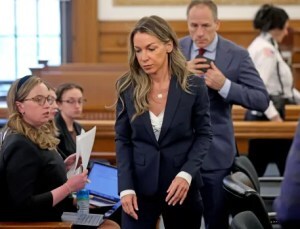
The jury selection for Karen Read’s retrial started last week and round two of this saga looks to be equally explosive. For all of you newcomers to the case, Karen Read was accused of backing her Lexus into her boyfriend, a Boston cop, and killing him in front of another Boston cop’s house, Sgt. Brian Albert.
As many of you might or might know, I’ve been a tad bit obsessed with this case. I’ve studied all the evidence and listened to dozens of podcasts about it. I watched almost every day of the trial last year and heard all the defense and prosecution witness testimony.
Let me just say straight up that I believe she’s not guilty. In fact I know she didn’t do it. The first trial was somewhat of a farce. Even the judge’s declaration of a mistrial seems a terrible decision and flies in the face of double jeopardy. Of the three counts, the jury had decided in deliberation that Karen Read was not guilty of the two most serious charges. And yet they were hung on the lesser charge, despite the judge giving them ample opportunity to come to a decision. But at the end of the trial, the judge did not require the jury to come to a decision on each individual charge. Instead, she called a mistrial on all three charges based on their split decision on the lesser charge. To me, that’s clearly double jeopardy, and because the Mass State Supreme Court turned down the appeal, the defense appealed to the federal courts. Just yesterday Brown denied the request, so the retrial will go on.
Since the first trial started, the lead detective in the case has been fired by the Maine State Police for actions unbecoming an officer. Trooper Proctor not only mishandled the case, but he took Karen Read’s phone and boasted that he was looking for nude pictures of her. Even before meeting the one-time Bentley College professor, Proctor called her a series of rude and profane names that clearly showed police bias. Making matters worse, the defense demonstrated that he was close friends with some of the key witnesses for the prosecution (witnesses that were close friends with Brian Albert, a person who the defense believes actually killed John O’Keefe). This alone should have caused the case to be dismissed for prosecutorial misconduct.
A recent audit of the Canton PD shows that they badly mishandled the case, from faulty evidence collecting to not interviewing the crime scene witnesses separately at the Canton PD. The crime scene was left unattended for hours at a time. Leaf blowers were used to remove snow so that they could look for tail light fragments, and yet no fragments were found until a few days later after more snow had fallen. These additional fragments were never photographed or recorded in a log, leading many to believe that they were planted in order to set Karen Read up. And since the crime scene was not locked down and supervised, it leaves open the possibility of evidence tampering.
This second trial will be interesting. The DA, led by Michael Morrissey, chose to hire an outside lawyer rather than use one of the seventy attorneys in his office. And not just any old lawyer, but one who once defended the notorious criminal, Whitey Bulger, and at a cost of over seven hundred thousand dollars to the taxpayers. Why would a DA do that? It seems wasteful of taxpayer money, especially after watching the new prosecutor in action. He fumbled and tripped over himself more than a few times in the pretrial hearing, leading many to believe he was woefully unprepared.
There’s so much more to this case that will come out during the retrial. As in the first trial, the Karen Read’s lawyers will be using a third party defense, arguing that the two cops who were inside the house when John died, were the ones who actually killed him. Maybe this time around the judge will let the defense tell the jury that the Feds had been actively investigating the Karen Read case for corruption (they’ve since ended the investigation). To that end, the Feds hired two of the most knowledgeable accident and crash reconstruction experts in the country (both have PhDs), and both experts stated that, based on the physics, there was no way Karen Read could have backed her Lexus into John O’Keefe and killed him. The prosecutions crash expert was a bumbling State Trooper named Joseph Paul who embarrassed himself on the stand and made the Mass State Police look like the Keystone cops. O’Keefe had no major injuries below his neck, other than a series of lacerations on his arm that look suspiciously like dog bites. If he’d been backed into At 25 MPH by a Lexus SUV, the bottom half of his body would have been severely injured. Oh, and the cop who owned the house had a German Shepherd with a known history of attacking people. He later got rid of his dog and re-homed it. He changed out all the floors in his basement. Then he sold his Canton home way below market value — and this during Covid when Massachusetts homes were selling for a premium.
I could go on and on about this strange and titillating case, but it would take up too many blog pages. It will interesting to see where the defense and prosecution go in the retrial and if their strategies will dramatically change. If you get a chance, tune in one day to one of the crime channels and watch the trial for yourself. It is one of the most unbelievable and egregious cases of injustice you will find anywhere. Poor Karen Read has been put through the wringer, and in the process has lost a lot of money.
If you want to learn more about the case, there’s a documentary on a Netflix about it called, A Body in the Snow: The Trial of Karen Read (2025). I haven’t seen it yet, but I hear it’s not bad.
And if you haven’t picked up my newest crime novel, CRUEL & BITTER THINGS Book 1, I hope you do. It’s on Amazon and Barnes & Noble.
Have a great day,
Joe
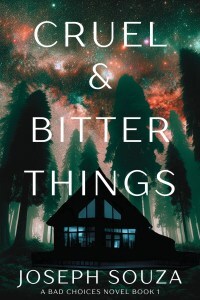
April 8, 2025
AVOID THE MONKEY
Jule Selbo/ April 2025

Deep into mid-book angst on 6 Days, A Dee Rommel Mystery, I start hoping for those story-fixer dreams that – for me – often happen in that last wave of sleep before getting up in the morning. As it happens, I like to get up around 4:30 am to start my workday, so I pray that after that 3 am slight wake-up to sip water and to check the clock (I hate to oversleep) that magic story-fixer dream will kick in.
 90 minutes left to snooze, I hope that the deep pull downwards into that last drowse will solve all my story problems.
90 minutes left to snooze, I hope that the deep pull downwards into that last drowse will solve all my story problems.
It happened the other day. All story problems disappeared.
Because it turned out –
The monkey did it.

The villain, apparently, was a disguised marmoset.

Her henchman were part of an obscure gibbon tribe from India or New Guinea and they had definite spy-worthy reasons for invading Portland Maine’s justice systems.In my ‘creative sleep’ I was so happy that all motives and motions and aliases were reasonable and certainly not predictable – they fell into that ‘didn’t see it coming but it sure make a lot of sense’ category.

In my ‘creative sleep’ I was so happy that all motives and motions and aliases were reasonable and certainly not predictable – they fell into that ‘didn’t see it coming but it sure make a lot of sense’ category.
The euphoria lasted as I swing my legs out of bed. And as I get ready to head to Becky’s Diner for the first butt-on-the-stool write of the day. I’m almost skipping down the hallway of my ancient condo building to the elevator…

I press the elevator button to go down ten floors to the parking garage sure that primates and orangutans were my saviors. Can’t wait to get to working longhand on the pages, to ‘fix’ all problems and sail through to ‘The End.’
In the small elevator cubicle, questions begin to present themselves. Wait. Does this monkey wear clothes? With style? Is she a grunge monkey? Is she a silverback? Does she have a monkey accent?


How do Dee (my protagonist) and these monkeys relate to each other? Are the anthropods really here to take over the world or just Portland Maine?

I walk into the quiet concrete parking area. Euphoria is dissipating. The Dee Rommel books are realistic. There’s no fantasy or sci-fi elements or horror (besides the realistic horror of crime and criminal minds) in the tales. How do I explain the fact that no one notices that there’s a bevy of King Kong sized primates eating burgers at Gritty’s? Or enjoying a lobster roll at Luke’s?
Sometimes those dreams are helpful and sometimes not.
After sufficient wakeful moments that morning, I realized that the day’s final 90 minutes of sleep fell into the ‘not helpful’ category.
But it did make me laugh. And think about a few other things.
That I had never been fond of the deus ex machina being a highly intelligent and/or evil four-legged hairy creature.That I had no idea why my brain was searching for non-sensical answers to clues/questions/motives and circumstances. Was I tired of working in ‘rational’? At least that day/night?
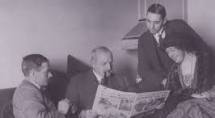
I had done some research on Agatha Christie a few months back and read about the DETECTION CLUB – this was a group of mystery writers (Dorothy L. Sayers, A.A. Milne (yes, he did write mysteries other than the ones that stumped Winnie the Pooh), G.K. Chesterton, Ronald Knox, Margaret Cole, E.C. Bentley, Anthony Berkeley and a few others. As a group they came up with rules to abide by – so that the mystery/crime genre could keep gaining in respect.
All members had to accept the rules – no one should employ certain elements in their stories such as:divine or supernatural revelationsmumbo jumbojiggery-pokery (meaning dishonest or deceitful behavior on investigator’s side)feminine intuitioncoincidences or acts of GodAlso:
the murderer shouldn’t come in towards the end of the storyno more than one secret passage per bookno twins or doublesthe detective can’t be the murdererI am going to add to their list for myself : no monkeys, chimps, gibbons, marmosets or primates of any kind. AVOID THE MONKEY

QUESTION:
ARE THERE some things you – as a matter of pride or taste or intuition – WON’T USE in solving your crime/mystery plots?
 SIDELIGHT AND QUESTION: Chronotypes refer to the natural preferences for our body’s sleep patterns. They are determined by our genetics and affected by circadian rhythms. They affect our performance during the day – our alertness, our appetites, and more. Adapting/accepting your genetically set chronotype can affect your moods and energies. Are you an ‘lion’ (early bird) or a ‘bear’ (follows the sun and likes traditional office hours) ‘wolf’ (night owl) or ‘dolphin’ (alert even when asleep – a semi-insomniac). When are you most productive/amenable/creative/kind during the day?
SIDELIGHT AND QUESTION: Chronotypes refer to the natural preferences for our body’s sleep patterns. They are determined by our genetics and affected by circadian rhythms. They affect our performance during the day – our alertness, our appetites, and more. Adapting/accepting your genetically set chronotype can affect your moods and energies. Are you an ‘lion’ (early bird) or a ‘bear’ (follows the sun and likes traditional office hours) ‘wolf’ (night owl) or ‘dolphin’ (alert even when asleep – a semi-insomniac). When are you most productive/amenable/creative/kind during the day?




After years of being an ‘early bird/lion’, I did a bit more research. I found that I probably have a longer allele on the PER3 circadian clock gene (if you want to get scientific about it).
So – no wonder I don’t party well into the night.
April 7, 2025
What Kermit Knew
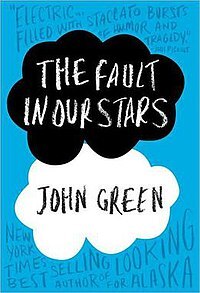
In February and March, I hosted two programs at the Waterville Public Library. Both were about author John Green and his books. The first one focused on his young adult books, The Fault In Our Stars, Paper Towns, Looking for Alaska, Will Grayson, Will Grayson, An Abundance of Katherines, and Turtles All The Way Down. Four of them have been made into films and I have had the chance to see three of them. All three are extremely well done adaptations.
If you’re unfamiliar with his fiction, you’re missing a real treat. Every book features wounded, often flawed characters that become more realistic as you get deeper in the story. Green uses his own personal pain and experiences to create protagonists who are not only lifelike, but make you care. In Stars, you meet two teens who meet in a cancer survivor support group and fall for each other, leading them on a quest to find a reclusive author in Amsterdam. It ends sadly, but beautifully. In Paper Towns, you meet two more teens, one of who lives with such toxic parents that she decides her only resort is to vanish, leaving cryptic clues that the other uses to try and find her.
In Alaska three friends at a private boarding school try to figure out what really happened to their extremely mercurial friend named Alaska. It is reminiscent of attending psychological autopsies when I worked at AMHI. An Abundance of Katherines is a quirky look at a young man who has been dumped nineteen times by girls with the same name. He decides to take a gap year and go on a road trip with his Muslim friend where they end up is a very small town whose claims to fame are a factory that manufactures tampon strings, and a mausoleum where the late Austrian archduke Ferdinand is a tourist attraction. There’s also a very intriguing girl and a mad scramble to perfect a mathematical formula that will explain why the main character was so frequently dumped.
Will Grayson features two teens with the same name who accidentally cross paths in an adult entertainment store one night. One is straight, the other gay, both have a poor track record when it comes to romance. The Gay Will is obsessed with producing a high school musical he’s written. There are scenes in this book that will have you laughing so hard you might fall out of bed.
Turtles is a story about a girl with pretty severe OCD (something the author has dealt with for most of his life). There are descriptions of her trying, but failing to be rational about her compulsive behavior that took me back to the time I was trying not to drink and failed miserably. They’re that realistic. When a very rich man who lives across the river from her house, vanishes mysteriously after being accused of fraud, she tries re-friending one his sons who she went to school with years before. Her goal is to get him to tell her where his father is hiding so she can get the reward money, but instead, they form a strange, but neat friendship.
For the March program, I read The Anthropocene reviewed : essays on a human-centered planet which came out in 2021. I am not one who reads much nonfiction, but I found myself savoring this. It has some of the same flavor of my late mother’s From The Orange Mailbox, in that it is a collection of short essays, many incorporating John Green’s personal life, as well as interactions with other people and bits of trivia. Each subject is given a rating between one and five stars.
He is not shy about sharing his personal dealings with OCD and severe depression and by doing so, makes this a far richer book. In the process of reading it, you’ll learn why this book has his signature in many copies, where the largest ball of paint in the world can be found and how it helped him pull out of a really bad depressive episode.
You’ll also learn how Diet Dr. Pepper came to be (it’s his favorite drink), the history of Piggly Wiggly grocery stores, his long history with scratch and sniff stickers, interesting things about Halley’s Comet, early days of the Internet, why the opening scenes from the movie The Penguins of Madagascar is epic, why we should still care about epidemics that no longer infect white people, the history of the QWERTY keyboard, and lots more.
In his new book, Everything Is Tuberculosis: The History and Persistence of Our Deadliest Infection, he uses the same super informative short chapter format as in Anthropocene, to immerse you in the history of TB and how it’s primarily a socioracist phenomena. I will quote two passages and encourage you to buy or borrow a copy. Please keep in mind that since he wrote the book, Trump has essentially destroyed any chance that the disease won’t spread more and faster by gutting USAID.

P. 86: “Framing illness as even involving morality seems to be a mistake, because of course cancer (he’s referring to his dad getting cancer at age 32) does not give a shit whether you are a good person. Biology has no moral compass. It does not punish the evil and reward the good. It doesn’t even know about good and evil.”
P. 180: Not long ago I was walking in the backyard, staring up at the night sky, when I happened to step on a nail that went right through my shoe and half an inch into my foot. The next morning, I drove on a good road to a clinic a few miles from my house, where I received a booster shot to eliminate the already small chance that my mishap with the nail might result in tetanus. But in order for this minor medical intervention to occur, so many systems had to work in my favor: I needed healthcare access of course-in my case a health insurance program that pays for basic preventative care like vaccines. I needed to live in a community with twenty-four hour electricity so that the tetanus shot could remain cold and not lose its efficacy. I needed a system that could efficiently and reliably transport not just the shot itself, but also the gloves worn by the nurse who did my injection. I needed to live in a community with an education system strong enough to train nurses and doctors. Ultimately, what I needed was not just a tetanus shot, but an entire set of robust systems to work perfectly in concert with each other-a phenomenon that ought not be a luxury in our world of abundance, and yet still somehow is.”
John puts a lot of himself into his books, whether they be fiction or nonfiction. Treat yourself to one of them soon.
PS-he’s speaking this month at Colby College.
April 4, 2025
Weekend Update: April 5-6, 2025
 Next week at Maine Crime Writers there will be posts by John Clark (Monday), Jule Selbo (Tuesday), Joe Souza (Thursday) and Vaughn Hardacker (Friday).
Next week at Maine Crime Writers there will be posts by John Clark (Monday), Jule Selbo (Tuesday), Joe Souza (Thursday) and Vaughn Hardacker (Friday).
In the news department, here’s what’s happening with some of us who blog regularly at Maine Crime Writers:
 Kathy Lynn Emerson: My updated MURDER IN THE MERCHANT’S HALL, the second in the three-book Mistress Jaffrey Mystery Series (a spinoff from my Face Down Mysteries) is now available in trade paperback and e-book formats. The amateur sleuth is Rosamond, the estranged foster daughter of Susanna, Lady Appleton (the detective in the Face Down series). Now married to Rob Jaffrey, the son of Lady Appleton’s steward and housekeeper, Rosamond resides in the London suburb of Bermondsey while he finishes his studies at Cambridge. Long-estranged from the rest of her family, she is reconciled with Lady Appleton when one of her childhood friends, Godlina Walkenden, is accused of murdering her merchant brother-in-law and asks for their help to find the real killer. Once again, Sir Francis Walsingham, Queen Elizabeth’s principal secretary and spy master, complicates Rosamond’s life, as does player and intelligence gatherer Henry Leveson. The story of a previous murder Rosamond and Lina encountered can be found in FACE DOWN BESIDE ST. ANN’S WELL. MURDER IN THE MERCHANT’S HALL was first published in 2015.
Kathy Lynn Emerson: My updated MURDER IN THE MERCHANT’S HALL, the second in the three-book Mistress Jaffrey Mystery Series (a spinoff from my Face Down Mysteries) is now available in trade paperback and e-book formats. The amateur sleuth is Rosamond, the estranged foster daughter of Susanna, Lady Appleton (the detective in the Face Down series). Now married to Rob Jaffrey, the son of Lady Appleton’s steward and housekeeper, Rosamond resides in the London suburb of Bermondsey while he finishes his studies at Cambridge. Long-estranged from the rest of her family, she is reconciled with Lady Appleton when one of her childhood friends, Godlina Walkenden, is accused of murdering her merchant brother-in-law and asks for their help to find the real killer. Once again, Sir Francis Walsingham, Queen Elizabeth’s principal secretary and spy master, complicates Rosamond’s life, as does player and intelligence gatherer Henry Leveson. The story of a previous murder Rosamond and Lina encountered can be found in FACE DOWN BESIDE ST. ANN’S WELL. MURDER IN THE MERCHANT’S HALL was first published in 2015.
Matt Cost has a new book coming out Tuesday. The Not So Merry Adventures of Max Creed, where Max is a modern-day Robin Hood fighting for justice on behalf of those abused by the ultra-wealthy. Check it out HERE.

Max Creed is a fictional person created to bring justice to those wronged by the ultra-wealthy in a world where the law overwhelmingly favors those with money and power. He is bound only by the laws of humanity and not those of the legal system.
When Sevyn Knight hires Max Creed and his disciples to right the wrongs done to her father at the hands of billionaire playboy Rupert Hastings, the game is afoot. Creed must enmesh himself in the world of the immoral tycoon in order to destroy him, but the temptations of sin and the allure of the pleasures of the rich and famous tease the very fabric of his being.
Aided by his business manager, John Little, the former assassin, Scarlett, the tech wizard, Scads, the attorney, Marian, and the financial guru, Tucker, Creed races against time to stop Hastings from becoming all-powerful as murky figures appear on the darkest edges of his fiefdom.
A breathless thrill ride that will keep your heart pounding long after the last page is turned.
An invitation to readers of this blog: Do you have news relating to Maine, Crime, or Writing? We’d love to hear from you. Just comment below to share.
And a reminder: If your library, school, or organization is looking for a speaker, we are often available to talk about the writing process, research, where we get our ideas, and other mysteries of the business, along with the very popular “Making a Mystery” with audience participation, and “Casting Call: How We Staff Our Mysteries.” We also do programs on Zoom. Contact Kate Flora
April 3, 2025
Short Stories, Big Inspiration
Like my colleagues on this blog, I believe it’s vital to give our work time and space to breathe before undertaking the last-last-last-absolute-last draft. I might think the story’s done, convince myself I’ve married strong characters to a clever plot and captured it all with compelling prose.
But experience has taught me that word choice, sentence cadence and plot development all benefit from simmering on the back burner for a good long while. A day or a week or a month later, depending on whether I have a deadline, I often return to a story I felt sure needed only a final polish and find a dozen creative cowlicks in need of taming.
I’ve been thinking about this recently while working on a couple of short stories, a challenge quite different from writing a novel. To be blunt, there’s no time to fart around when writing short story. In five or six thousand words characters need to be introduced, the plot must unfold, tension has to build, the climax needs to be reached, and loose ends have to be tied up.
I’ve been noodling with both stories for a while, and I believe it’s time they find home outside of my laptop. So I’ve been busy massaging sentences and evaluating synonyms, moving clauses around, cutting sentences and then paragraphs, reorganizing and then un-reorganizing. A few days ago, still fretting about wordiness, I pulled several short story collections off my shelves and looked for examples of writers I admire using relatively few words to make their stories sing. Here’s some of the inspiration I found:
 My friend Carolyn Marie Wilkins writes with beautiful rhythm, which makes sense because she’s also a jazz musician who teaches at Berklee College of Music in Boston. In her 2023 short story The Moon and Stars, published in Wolfsbane, she brings the reader right into the music hall where a cocksure young trumpet player is showing off:
My friend Carolyn Marie Wilkins writes with beautiful rhythm, which makes sense because she’s also a jazz musician who teaches at Berklee College of Music in Boston. In her 2023 short story The Moon and Stars, published in Wolfsbane, she brings the reader right into the music hall where a cocksure young trumpet player is showing off:
Jet’s composition had a twisting, looping melody and intense, unexpected harmonies, It was meant to be performed at a fiendishly difficult tempo. Two minutes into the tune, the drummer broke a sweat, his round face twisted in concentration. The tiny Chinese pianist hunched over her instrument, drawing forth massive clusters of sound that punctuated Jet’s frantic improvisation in all the right places. After a lengthy and acrobatic solo, the musical equivalent of a man turning summersaults on a balance beam, Jet blew a final high C.
 Joseph S. Walker is an award-winning short story writer (the Bill Crider Prize for Short Fiction at Bouchercon, the Al Blanchard Award at New England Crime Bake (twice!) who’s also been nominated for an Edgar and a Derringer. In his 2022 story Crime Scene, first published in Malice in Dallas and included in Best American Mystery and Suspense 2023, he writes a memorable, nuanced description of a hit man in seven smooth sentences. After listing his many skills—blowing up safes, hacking alarm systems, kidnapping people, he says of his character Adler:
Joseph S. Walker is an award-winning short story writer (the Bill Crider Prize for Short Fiction at Bouchercon, the Al Blanchard Award at New England Crime Bake (twice!) who’s also been nominated for an Edgar and a Derringer. In his 2022 story Crime Scene, first published in Malice in Dallas and included in Best American Mystery and Suspense 2023, he writes a memorable, nuanced description of a hit man in seven smooth sentences. After listing his many skills—blowing up safes, hacking alarm systems, kidnapping people, he says of his character Adler:
Eventually word got around that he didn’t mind eliminating people under the right circumstances, and Lamar started steering hits his way. By his count, Adler had done thirty-four. If he thought hard, he could remember all their names. Lately he’d been remembering them a lot, drifting around on the lake. It was always easiest to assume they all deserved what was coming. It was starting to bother him that for some of them, he didn’t know. He didn’t know why someone in their lives wanted the hammer dropped.
 MCW’s own Gabriela Stiteler, published in various anthologies and magazines in the past few years, is one of my favorite short story writers. Her 2024 story Two Hours West of Nowhere, originally published in Ellery Queen Mystery Magazine, was nominated for the prestigious Robert L. Fish Award and got an Other Distinguished Fiction shout-out in Best American Mystery and Suspense.
MCW’s own Gabriela Stiteler, published in various anthologies and magazines in the past few years, is one of my favorite short story writers. Her 2024 story Two Hours West of Nowhere, originally published in Ellery Queen Mystery Magazine, was nominated for the prestigious Robert L. Fish Award and got an Other Distinguished Fiction shout-out in Best American Mystery and Suspense.
I admire Gabi’s stilletto-sharp observations about her characters and their worlds. In her 2023 story A Simple, Hard Truth, published in Wolfsbane, she introduces a high school English teacher who worries about a quiet, bright student named Amy who’s stopped coming to school after asking a question in class that all but screamed she’s in crisis. It’s nearly graduation time, and the teacher’s determined to make sure Amy gets the diploma for which she’d worked so hard. She tracks down the girl at her home, described in this painful, poignant passage:
It was that misguided optimism that had me showing up at Amy’s address one Saturday morning in early spring, when the crocuses were starting to pop, golf ball-sized bursts of purple and white. Her trailer was robin’s egg blue and overlooked the on-ramp to 95 going north, The yard was half marsh and half brown patchy grass. The driveway was all mud and the roof was covered in a thin coat of moss . . . The mom, who might have been named Donna, was sitting on a rusted metal glider with a pressed-glass ashtray on her knee. She was wearing a faded yellow terry cloth bathrobe and a menthol cigarette was hanging out of her mouth . . . In that bright morning light she was almost beautiful, faded and soft at the edges like the petals of a daffodil.
For those looking for inspiration when revising and polishing your work, you’d be well-served to look for inspiration in gems like these.
Brenda Buchanan sets her work in and around Portland. Her three-book Joe Gale series features a contemporary newspaper reporter with old-school style who covers the courts and crime beat at the fictional Portland Daily Chronicle. Her short story, Means, Motive, and Opportunity, was in the 2021 anthology Bloodroot and received an honorable mention in Best American Mystery and Suspense 2022. Her 2023 story Assumptions Can Get You Killed appeared in Wolfsbane
April 2, 2025
What a Writer Can Learn from a Spring Garden
Kate Flora: I was going to write a post today about voice in our fiction, but I got bogged down in references and watching YouTube videos and taking notes. I got frustrated and headed out to the garden, which is always a great place to take my frustrations.
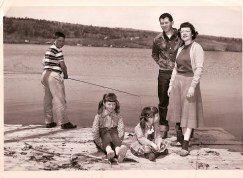 The way that writers see the world is a subject I return to fairly often, as you faithful readers may have noticed. Shapes and shadows, colors and textures. People and the odd things they do and say. Spring is the season that I slip away to the garden as often as I can and focus my noticing on the plants and shrubs. I love watching tiny shoots of green grow taller every day until they become large, lush plants with the promise of flowers ahead. I like to prowl along the edge of the perennial bed, looking for those tiny volunteers that have escaped and are trying to survive in the grass of the lawn. After admiring their tenacity,I dig them up and find them new places to grow.
The way that writers see the world is a subject I return to fairly often, as you faithful readers may have noticed. Shapes and shadows, colors and textures. People and the odd things they do and say. Spring is the season that I slip away to the garden as often as I can and focus my noticing on the plants and shrubs. I love watching tiny shoots of green grow taller every day until they become large, lush plants with the promise of flowers ahead. I like to prowl along the edge of the perennial bed, looking for those tiny volunteers that have escaped and are trying to survive in the grass of the lawn. After admiring their tenacity,I dig them up and find them new places to grow.
What do these shoots of green and shades of green that seem to change overnight teach

My mother, and writing and gardening inspiration, A. Carman Clark in her garden
me? Perhaps about how this is much like the way a book begins. First it is just a tiny idea, and by pondering on it, it gradually grows to become the plot of a book. Like those tiny shoots, a book idea needs attention. It needs to be fertilized with essential questions like: What is this story about? Who are the central characters and why is the book about this particular set of characters? Just as I will struggle to identify plants when they are tiny, knowing whose story it will be is critical to the thinking and planning that lies ahead.
As with plants, the story will need space to grow to its full size, in the brain and on the page. It will need the unnecessary ideas to be weeded out or transplanted to another place in the story so that the plant can grow. Sometimes it will need to be cut back to make the plot fuller and less straggly.
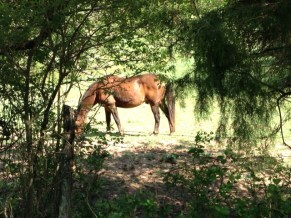
April at a writing retreat in Virginia. I pass this horse on the way to my studio
Like a tender plant needing a gardener to tend it, a book idea needs the author to figure out what the story needs to make it grow into a successful book. What will fertilize it? How much water (or perhaps, in an author’s case, how much alcohol) will it need to make it grow and achieve its full potential? What kind of research must be done to make the setting, characters, and plot feel authentic to a reader. And as in a successful garden, the plant, like a protagonist or antagonist, will need complimentary plants around it to illuminate it and compliment it. What complimentary shapes and sizes and colors will enhance a perennial bed? What sidekicks, bosses, clients, or love interests will shape and enhance your protagonist?
Often, as well, a plant will have other plants around it that will thwart its growth. And of
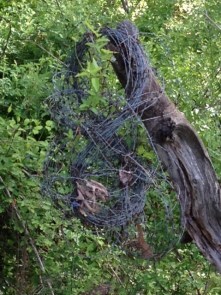
sometimes you have to get through the tangle
course, in any garden where there will be weeds, roots, rocks, and pests that will impede its successful growth to a mature plant. Similarly, in our fiction, there will be the obstacles internal and external, and the antagonists, both natural and human, which must be overcome in order for the story to thrive and develop and come to a successful conclusion where order is restored to the world.
Finally, like a well-told story successfully brought to its conclusion, there is the moment in the garden when a plant that has been successfully fertilized, watered, and protected from weeds and insects, fulfills its purpose by producing colorful leaves and glorious flowers. With the book, that is the moment when the writer types: The End, and sits back with a smile of satisfaction.
Of course, just as in a well-tender garden where plants need to be divided, cut back, staked, or shuffled around to new locations, for the writer’s story, generally typing: The End is not the end. It is simply the beginning of the next process: revision. And in the process, the garden reminds us that every part of the process needs our attention, and rewards it, with blooms or a finished book.
So happy spring, readers and writers. May your words flow and your garden grow!

March 31, 2025
How It All Began, Part Two
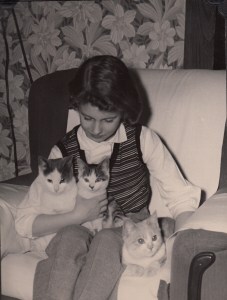
Spot and his brothers, Jack and Pete
Kaitlyn Dunnett/Kathy Lynn Emerson here, continuing with a theme I started with my last post. This time I’m looking back on my earliest attempt at writing non-fiction. Later I wrote and sold several books in this genre, including my Agatha-award-winning How to Write Killer Historical Mysteries. The first to be published, and also the first book I ever sold, was Wives and Daughters: The Women of Sixteenth-Century England (reissued, much enlarged and updated, as the original e-book A Who’s Who of Tudor Women). At about the same time (1984) Highlights for Children published my short story, “How Chester Greenwood Invented Earmuffs,” a piece I describe as fictionalized biography since Chester is a local hero here in Franklin County. Next came Making Headlines, a biography of reporter Nellie Bly for young readers (reissued as Nellie Bly, a Biography), but my biography-writing career actually started more than two decades earlier. Here’s the proof:
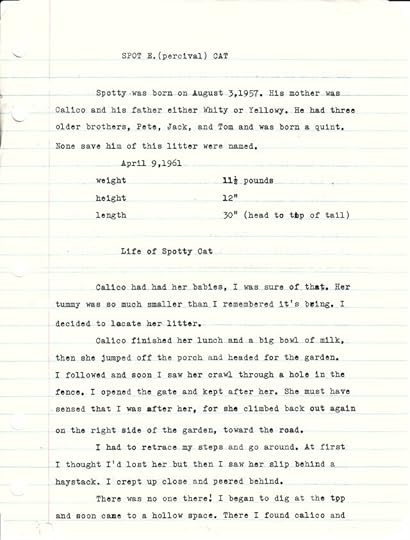
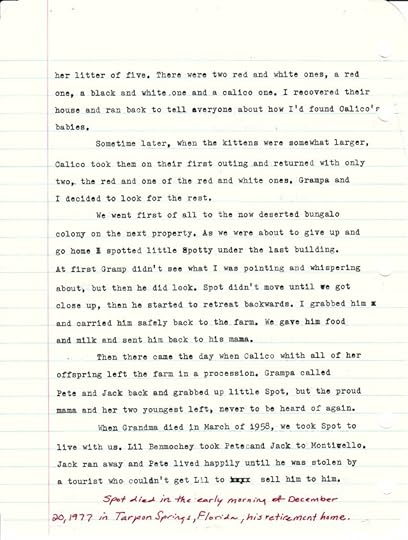
I didn’t take personal typing until senior year in high school, but I was able to hunt and peck at age 13, so I’m pretty sure I typed this myself, especially since I misspelled the last name of my mom’s best friend Lil.

my mom with Spot, 1967
I always loved reading biographies. They were right up there with reading girls’ mystery series when I was young. Somewhere in there, I started reading my father’s historical novels, too. I also kept diaries, but you’ll have to wait until my next post to read more about that aspect of how it all began.
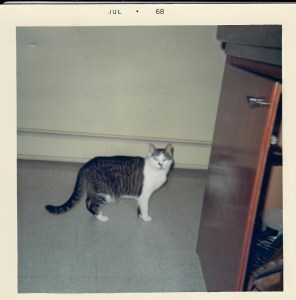
Question for readers: Do you still have vivid memories of your childhood pets? And for the writers out there—do you use your own animals in your fiction?
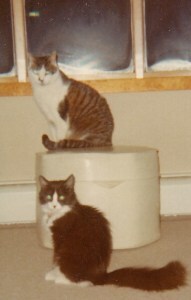
Spot with Jeremiah, the first cat I acquired after getting married
Kathy Lynn Emerson/Kaitlyn Dunnett has had sixty-four books traditionally published and has self published others. She won the Agatha Award and was an Anthony and Macavity finalist for best mystery nonfiction of 2008 for How to Write Killer Historical Mysteries and was an Agatha Award finalist in 2015 in the best mystery short story category. In 2023 she won the Lea Wait Award for “excellence and achievement” from the Maine Writers and Publishers Alliance. She was the Malice Domestic Guest of Honor in 2014. She is currently working on creating new editions of her backlist titles. Her website is www.KathyLynnEmerson.com.
Lea Wait's Blog
- Lea Wait's profile
- 508 followers



